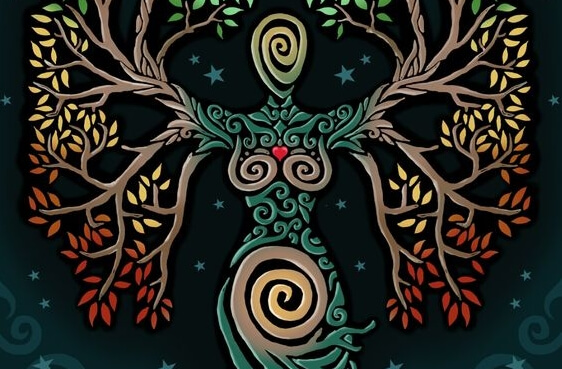What Trees Can Teach You about Finding Happiness


Written and verified by the psychologist Valeria Sabater
Trees rise from the ground regally and beautifully, nourished by strong roots connecting them to the earth. They’re not afraid of storms. Instead of resisting change, they let themselves be carried by nature’s cycles, serenely and happily.
All you have to do is observe their majestic silence to begin to understand all the magical wisdom they contain.
In his unforgettable book The White Goddess, Robert Graves said that trees share a lot of similarities with humans.
However, there’s something more mystical, balanced, peaceful, and even noble about them. In fact, one fascinating tree-related phenomenon recently went viral on social media.
“The wind does not break a tree that bends.”
-African proverb-
Not long ago, the concept of crown shyness instantly caught the attention of millions of Twitter users. Soon, biologists and naturalists were going into detail about crown shyness, a term coined in the 50’s to describe an unusual, fascinating natural phenomenon.
In tropical rain forests, with their extensive foliage, trees tend to grow very close together. But there are certain species that never end up touching each other, leaving a space in the canopy and producing fascinating gaps, beautiful vein-like patterns that let the sunlight shine into the forest below and create a stunning image.
These trees coexist in perfect harmony, perhaps communicating in some ancient language. They show that sometimes in nature, it’s not just the strongest that survive. Sometimes, mutual respect creates beauty.

Trees have roots that move in search of nutrients
Trees are not shy, and they leave nothing to chance. Actually, they’re incredibly wise, and it’s worth taking a more intimate, reflective look at them so that we might learn from them.
We know, for example, that “tree therapy” and “forest baths” are getting popular again. More than just walking through a forest or hugging a tree, it’s about understanding what they’re like so we can be like them.
- When you think of the roots of a tree, you immediately think of something unmovable, rigid, and firm. In fact, people associate roots with the family relationships that define and determine your life.
- However, this isn’t completely true. Trees actually move their roots strategically in search of nutrients, which allows them to grow, bloom, and expand.
- Trees use rather surprising mechanisms for gathering food. Many of them extend the ends of their roots long distances in search of nutrients.
We can also do the same. We can seek our own path and explore new perspectives. Why not move in new directions to find what we want or need?
No tree is created equal, and each tells a story
The rings of a tree trunk tell us much more than just the age of the tree rising majestically in the middle of a forest, field, or mountain. Dendrochronology can tell the whole life story of a tree, from the seasons of water shortage, to the snowy years, to the impact of plagues and fires…
- We, too, have internal marks, scars, and wounds. We, too, have grown through adversity, and every one of those difficult moments has made us unique and exceptional.
- Every person is a magical being that has risen in the middle of a vast and chaotic jungle, with his own leaves that have been touched by the sun and rattled by the wind, with its own wounds that heal in silence, with own roots and branches that serve as shelter so that others may grow and even touch the sky if they so desire…

The patient cycle of trees
Bamboo spends the first 7 years of its life growing downward, extending its roots in silence and wisdom, slowly but surely.
After that time, something incredible happens: it can grow up to 30 meters in a few short months. It becomes tall, flexible, and resilient, one of the most fascinating organisms in the natural world.
“Trees are sanctuaries. Whoever knows how to speak to them, whoever knows how to listen to them, can learn the truth.”
-Herman Hesse-
Everything in nature has a cycle, and if any organism knows anything about time, it’s trees. Humans, on the other hand, are the most impatient beings on the planet. We seek quick fixes, speedy successes, and instant gratification.
None of that makes sense in the natural world. Trees don’t experience frustration; they patiently invest in their own internal growth, observing the present, letting their seeds germinate, and finding the best nutrients.

Let’s learn from them and be inspired by the wisdom of their cycles and respectful language. Everything takes the time it takes. Everything comes and goes, but trees never stop taking care of themselves and others.
We’re all a part of a delicate balance, an ecosystem where we must choose affection, consideration, and respect to grow and live in perfect harmony.
Let’s be like trees.
Trees rise from the ground regally and beautifully, nourished by strong roots connecting them to the earth. They’re not afraid of storms. Instead of resisting change, they let themselves be carried by nature’s cycles, serenely and happily.
All you have to do is observe their majestic silence to begin to understand all the magical wisdom they contain.
In his unforgettable book The White Goddess, Robert Graves said that trees share a lot of similarities with humans.
However, there’s something more mystical, balanced, peaceful, and even noble about them. In fact, one fascinating tree-related phenomenon recently went viral on social media.
“The wind does not break a tree that bends.”
-African proverb-
Not long ago, the concept of crown shyness instantly caught the attention of millions of Twitter users. Soon, biologists and naturalists were going into detail about crown shyness, a term coined in the 50’s to describe an unusual, fascinating natural phenomenon.
In tropical rain forests, with their extensive foliage, trees tend to grow very close together. But there are certain species that never end up touching each other, leaving a space in the canopy and producing fascinating gaps, beautiful vein-like patterns that let the sunlight shine into the forest below and create a stunning image.
These trees coexist in perfect harmony, perhaps communicating in some ancient language. They show that sometimes in nature, it’s not just the strongest that survive. Sometimes, mutual respect creates beauty.

Trees have roots that move in search of nutrients
Trees are not shy, and they leave nothing to chance. Actually, they’re incredibly wise, and it’s worth taking a more intimate, reflective look at them so that we might learn from them.
We know, for example, that “tree therapy” and “forest baths” are getting popular again. More than just walking through a forest or hugging a tree, it’s about understanding what they’re like so we can be like them.
- When you think of the roots of a tree, you immediately think of something unmovable, rigid, and firm. In fact, people associate roots with the family relationships that define and determine your life.
- However, this isn’t completely true. Trees actually move their roots strategically in search of nutrients, which allows them to grow, bloom, and expand.
- Trees use rather surprising mechanisms for gathering food. Many of them extend the ends of their roots long distances in search of nutrients.
We can also do the same. We can seek our own path and explore new perspectives. Why not move in new directions to find what we want or need?
No tree is created equal, and each tells a story
The rings of a tree trunk tell us much more than just the age of the tree rising majestically in the middle of a forest, field, or mountain. Dendrochronology can tell the whole life story of a tree, from the seasons of water shortage, to the snowy years, to the impact of plagues and fires…
- We, too, have internal marks, scars, and wounds. We, too, have grown through adversity, and every one of those difficult moments has made us unique and exceptional.
- Every person is a magical being that has risen in the middle of a vast and chaotic jungle, with his own leaves that have been touched by the sun and rattled by the wind, with its own wounds that heal in silence, with own roots and branches that serve as shelter so that others may grow and even touch the sky if they so desire…

The patient cycle of trees
Bamboo spends the first 7 years of its life growing downward, extending its roots in silence and wisdom, slowly but surely.
After that time, something incredible happens: it can grow up to 30 meters in a few short months. It becomes tall, flexible, and resilient, one of the most fascinating organisms in the natural world.
“Trees are sanctuaries. Whoever knows how to speak to them, whoever knows how to listen to them, can learn the truth.”
-Herman Hesse-
Everything in nature has a cycle, and if any organism knows anything about time, it’s trees. Humans, on the other hand, are the most impatient beings on the planet. We seek quick fixes, speedy successes, and instant gratification.
None of that makes sense in the natural world. Trees don’t experience frustration; they patiently invest in their own internal growth, observing the present, letting their seeds germinate, and finding the best nutrients.

Let’s learn from them and be inspired by the wisdom of their cycles and respectful language. Everything takes the time it takes. Everything comes and goes, but trees never stop taking care of themselves and others.
We’re all a part of a delicate balance, an ecosystem where we must choose affection, consideration, and respect to grow and live in perfect harmony.
Let’s be like trees.
This text is provided for informational purposes only and does not replace consultation with a professional. If in doubt, consult your specialist.







